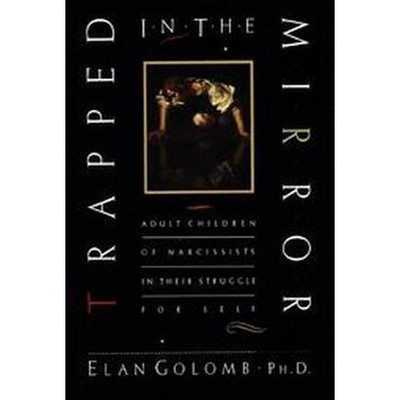Jesse Livermore - Boy Plunger - by Tom Rubython (Hardcover)

Similar Products
Products of same category from the store
AllProduct info
<p/><br></br><p><b> About the Book </b></p></br></br>Jesse Livermore, was the most successful stock trader that ever operated. Singlehandedly he caused the two great Wall Street crashes of 1907 and 1929, making millions from both. Briefly in the early 1930s he was one of the world's richest men with a personal fortune believed to be worth over $150 million. It was too extreme a change of fortunes and Livermore shot himself in a New York hotel lobby in 1940 aged just 63.<p/><br></br><p><b> Book Synopsis </b></p></br></br>Livermore went bankrupt for at least the fourth time in 1934. Despite having amassed a fortune of $100 million by1929, Livermore was back where he started at 16. He did not seem to learn from his mistakes."--Victor Niederhoffer "That was the call of a lifetime, everyone was blind and deep into the crisis and Jesse Livermore made $100 million going short when almost everyone else was bullish and then almost everyone else lost their shirts."--John Paulson "His stories of making millions, were the financial equivalent of "sex, drugs and rock 'n roll" to a young man at the advent of his financial career."--Paul Tudor Jones "It was an amazing day on 24th October 1929 when Jesse came home and his wife thought they were ruined and instead he had the second best trading day of anyone in history."--John Templeton Who was Jesse Livermore? Jesse Livermore, was the most successful stock and commodities trader that ever operated on the stock markets. He was both the man who made the most money in a single day and the man who lost the most money in a single day. In fact he made and lost three great fortunes between 1900 and 1940. Singlehandedly he caused the two great Wall Street crashes of 1907 and 1929, making millions from both. When he speculated he speculated big and was known on Wall Street as the Boy Plunger. For a brief period in the early 1930s he was one of the world's richest men with a personal fortune believed to be worth over $150 million, $100 million of that earned in just a few days from the Wall Street crash of 1929. In the end it was too extreme a change of fortunes for any man to cope with and Livermore shot himself in a New York hotel lobby in 1940 aged just 63. His legacy continued and his son, Jesse jr later also committed suicide as did his grandson, Jesse III. In the summer of 1929 most people believed that the stock market would continue to rise forever. Wall Street was enjoying a eight-year winning run that had seen the Dow Jones increase 1,000 per cent from the start of the decade - an unprecedented rise. The Dow peaked at 381 on 3rd September and later that day the most respected economist of the day, Irving Fisher, declared that the rise was "permanent." One man vigorously disagreed and sold $300 million worth of shares short. Two weeks later the market began falling and rising again on successive days for no apparent reason. This situation endured for a month until what became famously known as the three 'black' days: On Black Thursday 24th October the Dow fell 11% at the opening bell, prompting absolute chaos. The fall was stalled when leading financiers of the day clubbed together to buy huge quantities of shares. But it was short-lived succor and over that weekend blanket negative newspaper commentary caused the second of the 'black' days on Black Monday 26th October when the market dropped another 13%. The third 'black' day, Black Tuesday 29th October saw the market drop a further 12%. When the dust had settled, between the 24th and 29th October, Wall Street had lost $30 billion. Only much later did it became known that the man who had sold short $300 million worth of shares was Jesse Livermore. Livermore had made $100 million and overnight became one of the richest men in the world. It remains, adjusted for inflation, the most money ever made by any individual in a period of seven days. This is the story of that man.<p/><br></br><p><b> About the Author </b></p></br></br>Tom Rubython is best known as the author of Life of Senna, the definitive biography of Brazilian race driver Ayrton Senna. Life of Senna has become the biggest-selling third party biography of a racing driver, with 100,000 copies sold. Six years after its publication, it still sells over 8,000 copies a year. Before beginning as a biographer, Rubython was well known in the world of magazine publishing, spanning the worlds of sport and business. Aside from his work in Formula One, he has been a specialist business writer for thirty years. In business, he is the former editor of BusinessAge, EuroBusiness and Spectator Business. In sport, he has edited F1 Magazine, BusinessF1 and SportsPro. Rubython now specializes in non-fiction storytelling. He is passionate and methodical about the process of writing and researching the definitive biography. Starting out with a determination to tell the full story of a person's life, he emphasizes what is important and de-emphasizes what is not; the crucial tools of any biographer. Paul Tudor Jones' connection with Jesse Livermore began when he started his career in finance at Livermore's first broker, E.F. Hutton at the age of 26. Shortly afterwards he founded his own investment firm, the Tudor Investment Corporation. He became a student of Livermore and resolved that every new employee be handed a copy of Reminiscences of a Stock Operator, the fictional biography of Livermore, on their first day at work. His study of Livermore's methods paid off in 1987 when he was able to predict Black Monday on 19th October 1987. Employing exactly the same short strategies as Livermore did in 1907 and 1929 he is said to have tripled his net worth that day. He never looked back and by 2014 his firm had over $14 billion under management. He has consistently made money for himself and his clients so much so that Forbes magazine rated him the 345th richest man in the world in its 2014 wealth rankings. Nowadays he devotes as much of his time to philanthropy as making money for himself running the highly successful Robin Hood Foundation. He started it to give money away himself and encourage other successful fund managers to do so as well. The Foundation is unique in that 100% of donations are spent on good causes. Fortune magazine called it: "one of the most innovative and influential philanthropic organizations of our time."
Price History
Cheapest price in the interval: 22.49 on October 22, 2021
Most expensive price in the interval: 25.49 on March 10, 2021
Price Archive shows prices from various stores, lets you see history and find the cheapest. There is no actual sale on the website. For all support, inquiry and suggestion messages communication@pricearchive.us




















